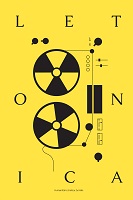Contribution of the Latvian Brethren Congregations to the Musical Culture of the 18th Century: Preliminary Research Results, Basic Research Directions, and Perspectives
Contribution of the Latvian Brethren Congregations to the Musical Culture of the 18th Century: Preliminary Research Results, Basic Research Directions, and Perspectives
Author(s): Ilze Šarkovska-LiepiņaSubject(s): Music, Culture and social structure , Sociology of Culture, Sociology of the arts, business, education, Sociology of Art, History of Art
Published by: Latvijas Universitātes Literatūras, folkloras un mākslas institūts
Keywords: music history; Moravian Brethren; Herrnhutians; Pre-Classical period;hymnals;
Summary/Abstract: The origins of Latvian national art music are most associated with the beginnings of the Jānis Cimze Vidzeme1 Teachers’ Seminary (also Zimse, 1814–1881) in 1839 in Valmiera/Wolmar (1839–1849) and later in Valka/Valk (1849–1881), as well as with the teachers whose activities laid the foundations for the subsequent growth of Latvian and Estonian professional music: choir music foremost, but also the tradition of organ-playing as well as the skill of playing the violin and wind instruments and the popularization of these instruments among Latvians. According to the memoirs of Jānis Cimze, mixed choirs were already considered old-fashioned in Livonia by 1843 (Cimze 1874). They had started in parish schools. Cimze’s memoirs reveal that as a child in 1822 he listened to multipart singing at a Bible festival and, in about 1830, he sang in a choir himself — Joseph Haydn’s (Seven Last Words of Our Saviour on the Cross, as well as excerpts from George Frideric Handel’s oratorios (Ibid.). Rauna/Ronneburg, where Jānis Gaiķe (also Gaiķis, 1796–1858) worked as a teacher, was a particularly important place for choral singing, as was Krimulda/ Kremon. Choral scores circulated from Rauna to Dzērbene/Serben, both Piebalgas (Vecpiebalga/Alt-Pebalg and Jaunpiebalga/Neu-Pebalg), Straupe/Groß-Roop, Trikāta/Trikaten, Āraiši/Arrasch and Valmiera. Pēteris Inzelbergs (also Inselberg, 1806–1894), a teacher in Liezēre/Losern from 1829 onwards, recollects that, in the early 1820s, he sang four-part songs at Rubene/Papendorp School with teacher J. D. Apīnis, and also later at the Valmiera Kreutz School (Inselberg 1874). The choirs were small, initially performing in churches and mostly monophonic. But a decade later an organ was installed at the Liezēre Church and then six singers sang four-part harmonies. Inzelbergs added currently lesser-known composers such as Friedrich Ludwig Aemilius Kunzen (1761–1817) (or Carl Adolf Kunzen, 1720–1781), Ludwig Erk (1807–1883) and David Hermann Engel (1816–1877) to the opuses of Joseph Haydn and Handel (Ibid.). The most intensive singing practice, however, took place in schools where multipart singing was common. An article in an 1823 edition of Latviešu Avīzes (The Latvian Newspapers) mentions the consecration of the new Zeltiņi/Seltinghof Church, which featured the performance of a song with ‘new music.’ Musicians had led the procession to the new church, followed by 12 trained singers from the Alūksne/Marienburg parish and, according to the correspondent, ‘a thousand voices harmonised well in song’ (Latviešu Avīzes 1823). Although the ‘thousand voices’ is most likely an exaggeration, the article points to the massed format of the singing. The scores were mostly acquired and hand-copied. Teacher Pēteris Ulpe (1810–1884) recalls the 1830s: ‘There was not much printed music available back then. Much sweat was exerted and people’s eyesight deteriorated from the hand-copying process’ (Ulpe 1874). These and other testimonies raise a number of questions. Where did this passion for teaching and studying music and singing originate? Why is it that the majority of testimonies of choral singing originate in Livonia? (Although such testimonies are also abundant in Courland.) Why was multipart singing so popular even before Jānis Cimze became involved? Which Latvian teachers and music experts managed to lay the groundwork for choral singing among Latvians? These questions are indirectly addressed in a number of research papers in the areas of history, literature, and book studies, analyzing the history of the Brethren movement in Latvia (Adamovičs 1963; Apīnis 1987, 1982; Ceipe 1995, 2006; Dunsdorfs 1973; Grudule 2011; Harnack 1860; Johansons 1975; Kaudzīte 1877; Krēsliņš 2006; Krodznieks 1914; Sloka 1925–1927; Straube 2000, 2005, 2017; Strautiņa 2016; Štolls 2016; etc.). A more or less guiding principle in these studies is the concept of the special place music and singing holds in the lives of Brethren congregations. Livonia was the most active region and centre of Brethren congregations in the Baltics: this was where the culture of Brethren congregations was expressed most strikingly (an ecosystem of sorts), and these were the earliest choir movement centers in Latvia. The aim of this publication is to seek answers to the aforementioned questions both by analyzing previous studies, publications, and sources and by presenting the results of the initial research from a musicological angle. The article will outline perspectives and directions for further research into the musical heritage of Brethren congregations.
Journal: Letonica
- Issue Year: 2022
- Issue No: 46
- Page Range: 102-119
- Page Count: 18
- Language: English

